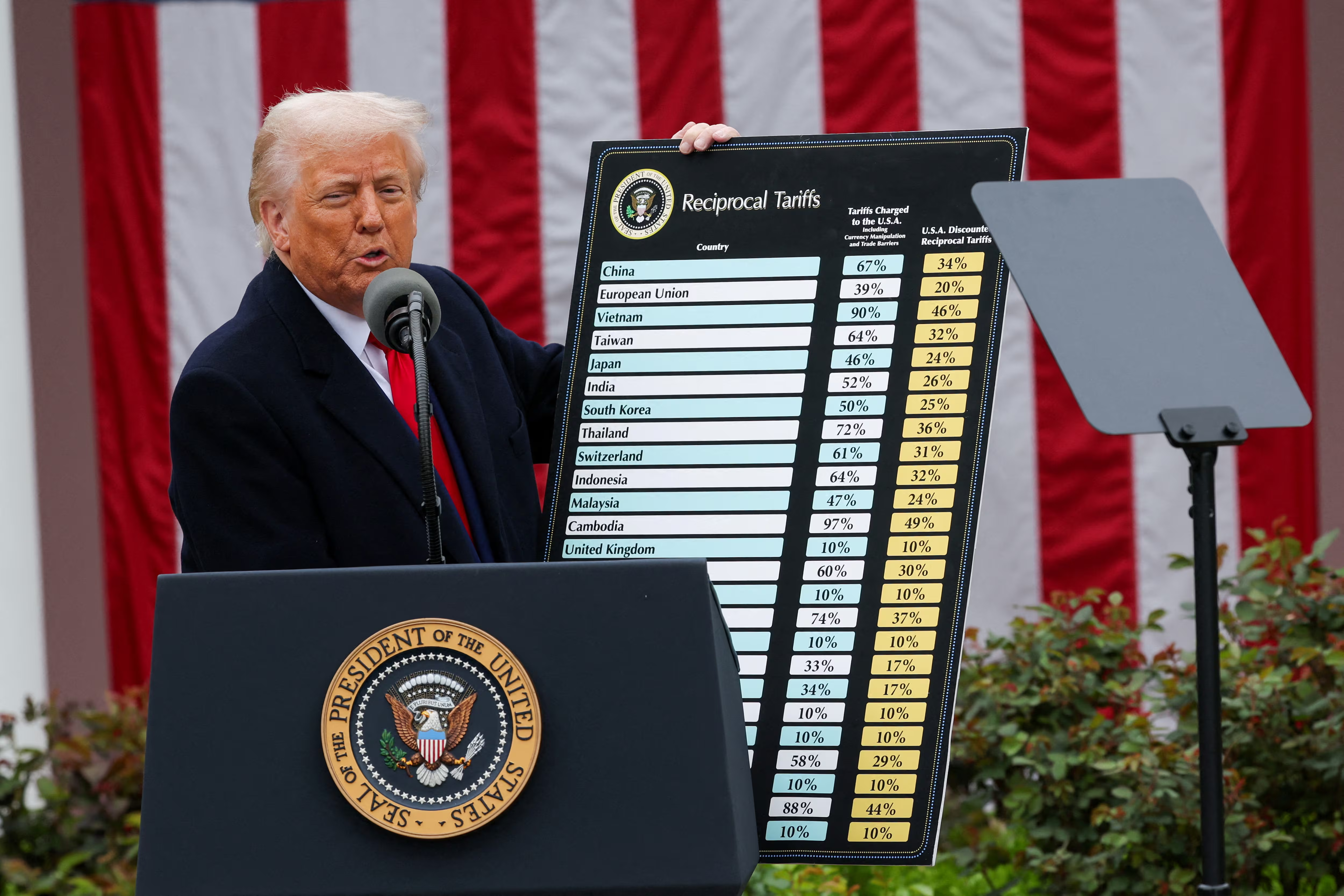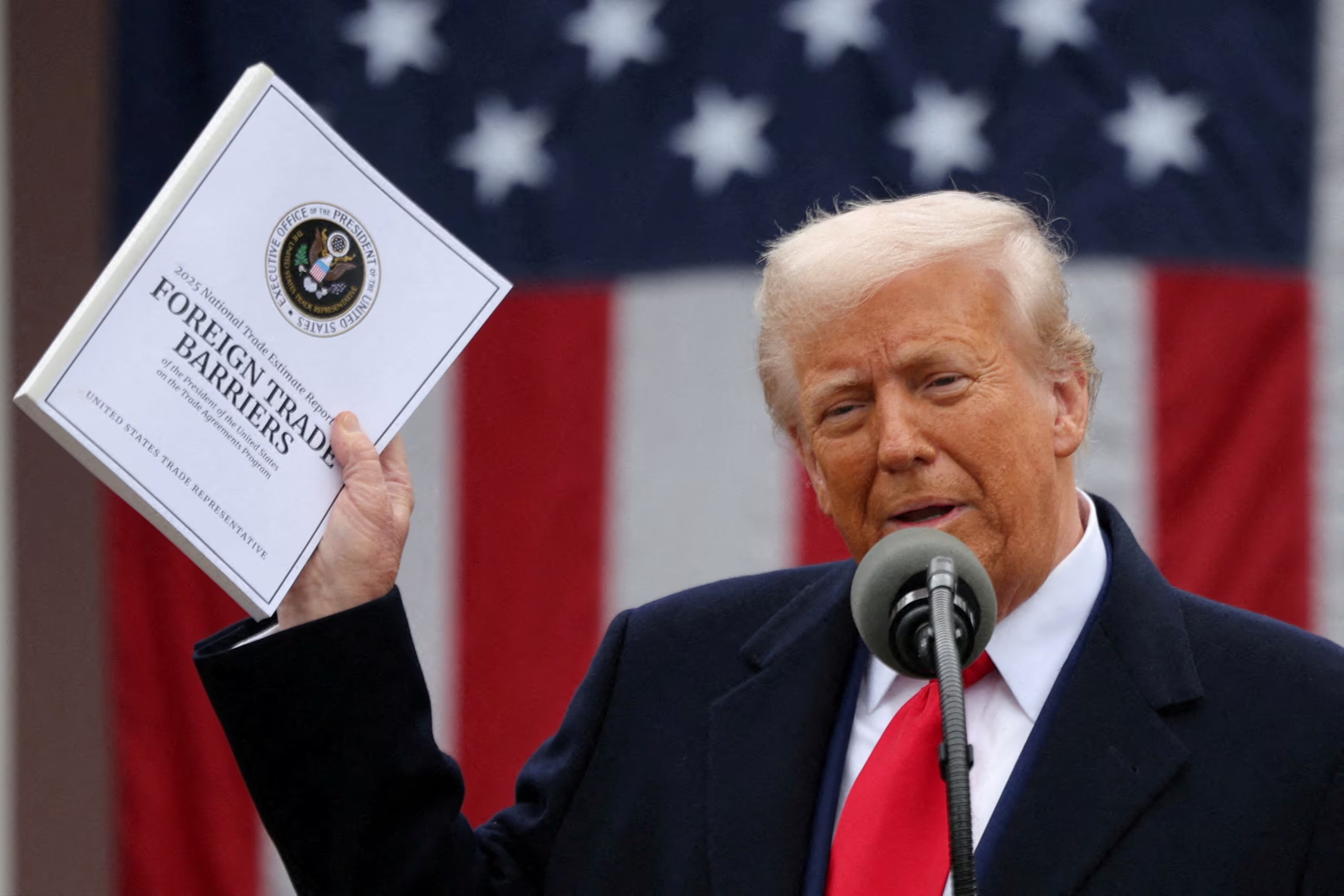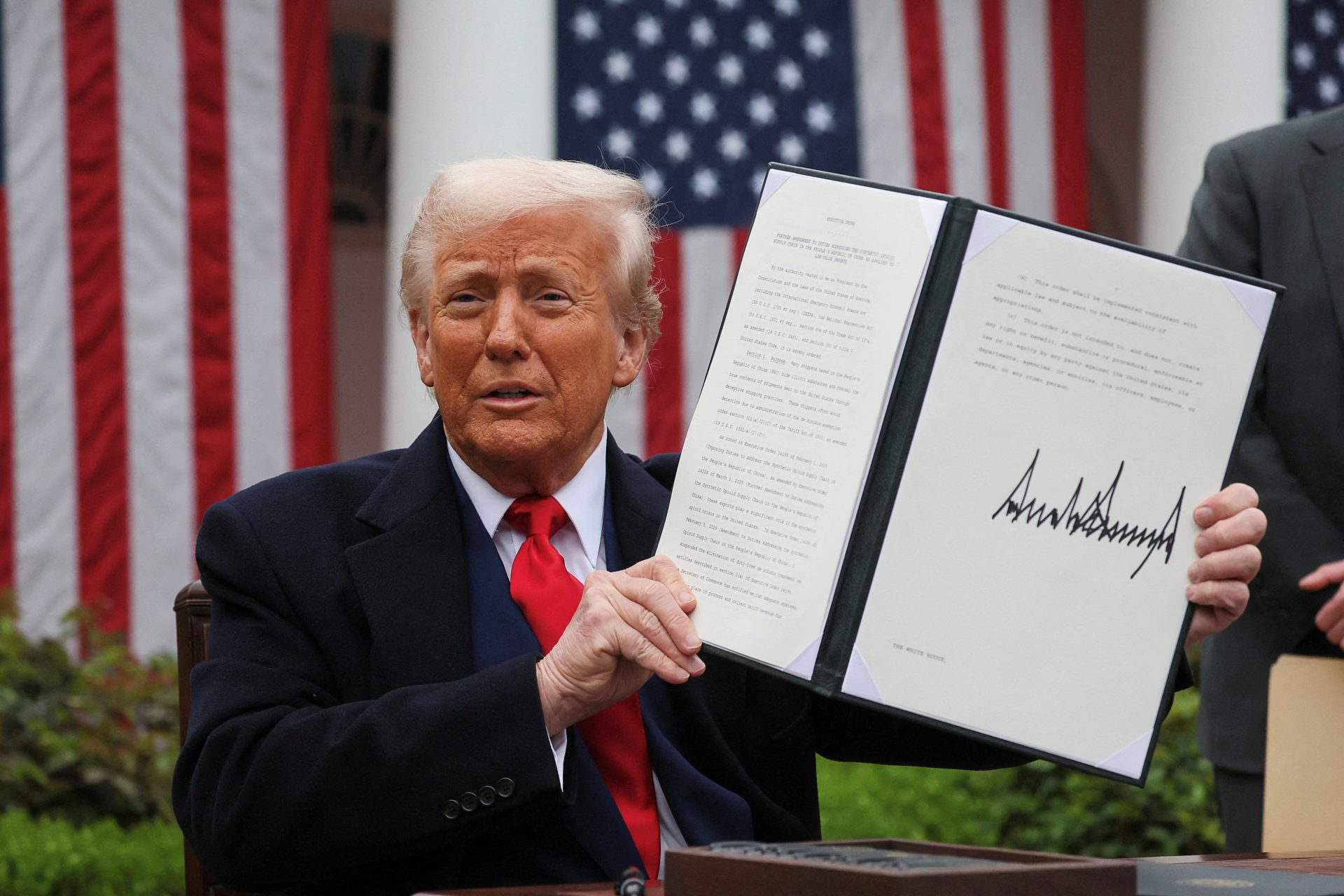By Felix Martin
LONDON – If there was any remaining doubt, the unipolar U.S. moment is over. On January 30 newly installed U.S. Secretary of State Marco Rubio called time on the country’s three-decade-long run as the sole arbiter of global affairs, calling it an “anomaly”.
A fortnight later, Secretary of Defense Pete Hegseth explained clearly the new dynamic when he described China as a “peer competitor” and told other members of the NATO alliance that the U.S. must henceforth focus on deterrence of its new superpower rival.
Russia’s invasion of Ukraine, the conflicts in the Middle East, and the U.S. insistence that allies from Canada to Panama reject what it claims to be Chinese infiltration were already symptoms of a new, fundamentally bipolar world order.
President Donald Trump’s blanket tariffs on global trading partners, which he unveiled on Wednesday, further underscore the shift.
RELATED: Donald Trump faces revised US indictment in election subversion case
International investment allocations, however, remain glaringly out of sync with this epochal geopolitical shift.
For the past decade and a half, American capital markets have been the only game in town. As of December, net foreign ownership of U.S. assets hit an all-time high of just over $26 trillion, or almost 90% of the United States’ GDP, according to the U.S. Bureau of Economic Analysis.
The U.S. stock market is so gargantuan – and richly valued – that it accounts for almost three-quarters of the MSCI World Index of developed market equities.
Three companies – Apple, Nvidia and Microsoft – each represent higher shares of the MSCI ACWI Index of global equities than the entire UK stock market.
When it comes to investing, it is as if the American unipolar moment never ended.
The net result of this almighty disconnect is the prospect of a generational shift in asset allocations as investors seek to realign their portfolios with the new geopolitical reality. Where they should redeploy their capital, however, is no simple question.

On the one hand, the opportunity set is larger than ever. Unlike during the original Cold War, three decades of globalisation mean investors today have access to large, liquid financial markets on all sides of the new strategic divides.
On the other, the new world disorder is comprehensively upending global investment risk. Public finances are straining from myriad new stresses, trade and finance are facing dramatic new disruptions, and capital flows are undergoing sharp adjustments.
One compelling category of investment destinations might be termed “inbetweeners”: those major emerging markets which combine investable financial markets with the economic and geopolitical heft to avoid wholesale alignment with either the U.S. or China.
Investors will doubtless disagree about exactly which jurisdictions meet these two criteria. But at a minimum Brazil, Turkey, South Africa, the Gulf Cooperation Council countries, India, and Indonesia make the grade. That group alone makes the inbetweeners too big to ignore.
They collectively account for more than a quarter of the globe’s working-age population; nearly a fifth of world GDP measured at purchasing power parity; just under a sixth of global active military personnel; and around a tenth of world trade and defence spending, respectively.
RELATED: Gold climbs as new Trump tariffs on auto sector stoke trade tensions
The thesis that strategic neutrality can yield tangible economic advantages, meanwhile, has historical precedent to back it up.
In 1961, the leaders of 25 developing countries founded the Non-Aligned Movement (NAM) with the express intent of preserving autonomy in trade, technology, and financial relations with the Cold War’s two superpowers.
Over the next two decades, that strategy paid off. Per-capita income growth in NAM countries notably outperformed the world average.
Leading members which maximised the opportunity to borrow from and trade with both east and west pocketed even larger rewards.
Egypt, Yugoslavia, and Indonesia grew their economies at average annual rates of 6.0%, 5.7%, and 5.4% a year, respectively, for 20 years straight.
In today’s era of far more integrated global trade and capital markets, the benefits of being on good terms with both the world’s superpowers are undoubtedly even bigger.
For a taste of the advantages, look no further than financial centres such as Dubai and Singapore – the boomtowns luring international bankers from London and New York – or former backwaters such as Kazakhstan which have become vibrant hubs of east-west trade.
Playing the middleman in a global economy 10 times the size it was in the days of the original NAM is at least 10 times as valuable.
Forget the regulatory and tax arbitrage that has been the key to optimising corporate capital structures and supply chains for the last three decades.

It is geopolitical arbitrage which will unlock resilience and profitability in the new Cold War – and it is inbetweeners that offer the obvious go-to locations for that service.
Yet while non-alignment served the original NAM very nicely in the 1960s and 70s, its members’ performance in the 1980s was less impressive.
Between 1981 and 1991, the group’s per-capita income growth began to lag competitors in the Western and Eastern blocs.
In Yugoslavia, which had enjoyed the most liberal access to trade and finance from both sides, income per head actually shrank.
It turned out that the independence afforded by being indispensable to both sides in a polarised world could easily slip into policy indiscipline.
That is a cautionary tale for investors attracted to today’s inbetweeners. Between 2000 and 2014, Saudi Arabia ran an average fiscal surplus of nearly 8% of GDP.
For the last decade, extravagant investment projects such as the $500 billion NEOM development project have converted that into an average annual deficit of 6% of GDP.
Last month, Turkish President Tayyip Erdogan’s main challenger Ekrem Imamoglu was detained on corruption charges, sending the country’s financial markets into free fall. The disintegration of the unipolar world order may mean that valuable external constraints on inbetweener governance and public finances will evaporate as well.
The biggest threat to the inbetweeners’ bid for a share of the coming reconfiguration of global capital flows comes from an entirely different direction, however.
The starkest difference between the original Cold War and the latest superpower showdown is the sudden U.S. repudiation of its long-time allies in Europe, North America, and Asia.
That raises an obvious possibility. Maybe the real inbetweeners are now closer to home than developed-market investors think.
The investment destinations that offer the biggest geopolitical arbitrage opportunity to refugees from the U.S.’s out-of-sync unipolar markets are none other than Europe, Canada, and Japan. (Reuters Breakingviews)


